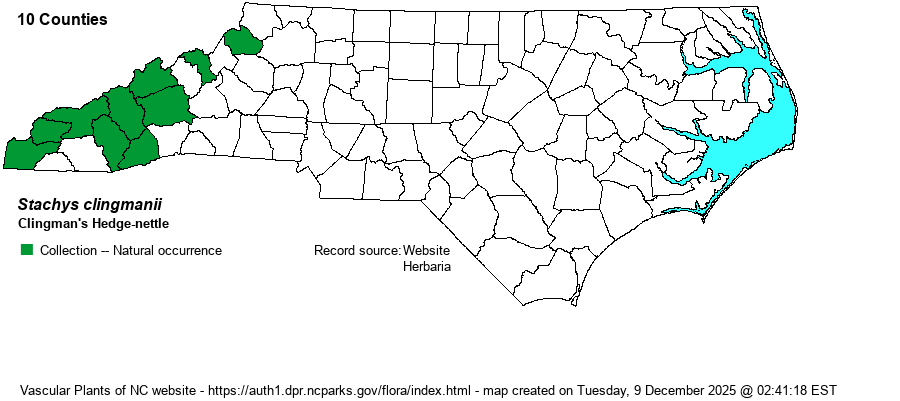| Author | Small | |
| Distribution | Limited to the Mountains, ranging north to Watauga County and south to the GA border; found mainly at high elevations. The Madison County record (USDA) is not supported by a specimen at SERNEC.
This species is limited only to western NC and adjacent TN -- an extreme Southern Appalachian endemic. | |
| Abundance | Uncommon from Buncombe County southwest to Cherokee County, and perhaps locally numerous; rare farther northward. The NCNHP considers this as a Significantly Rare species. | |
| Habitat | This species is found in spruce-fir forests, mixed spruce-hardwood forests, boulderfield forests, and northern hardwood forests -- thus, only in high elevation habitats. |
| Phenology | Blooms from June to August, and fruits from September to October. | |
| Identification | This species has distinct and fairly long petioles; and it is one of the few in the genus with cordate to truncate leaf bases, with the paired leaves being ovate in overall shape. The leaf margins are strongly dentate (sharply toothed), as opposed to more shallowly serrated or crenate (rounded teeth) in the similar S. nuttallii and S. cordata. This species has the inflorescence of whorled flowers stiff and thus quite erect, as opposed to more lax and somewhat drooping in S. nuttallii sand S. cordata. Lastly, in this species, the bracts within the inflorescence are reduced upward to the top, whereas in S. nuttallii and S. cordata the bracts are abruptly reduced in the upper portions (to make the inflorescence appear "leafless"). | |
| Taxonomic Comments | This species was first described in 1981. Owing to it not being overly rare, older records of it were certainly considered as another named species.
Stachys is a large and complex genus that is still actively being worked on, and our understanding of the species is slowly being clarified. For interested readers, we recommend journal papers by Nelson (1981, 2008) and by Fleming et al. (2011). | |
| Other Common Name(s) | None | |
| State Rank | S2 | |
| Global Rank | G2 | |
| State Status | SR-T | |
| US Status | | |
| USACE-agcp | UPL link |
| USACE-emp | FAC link |

